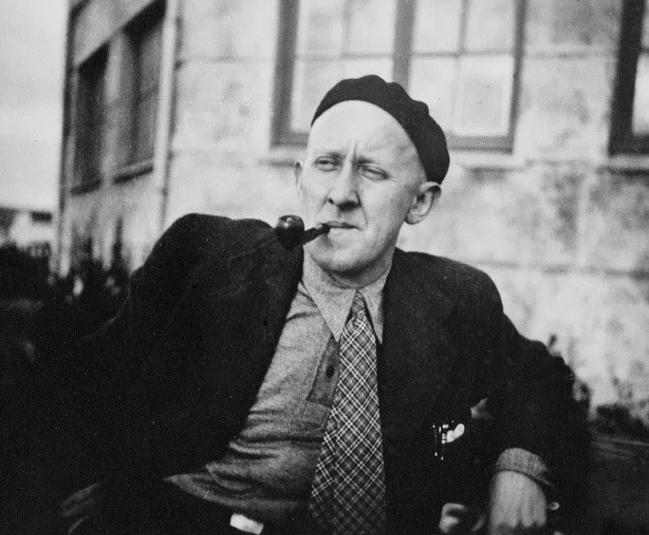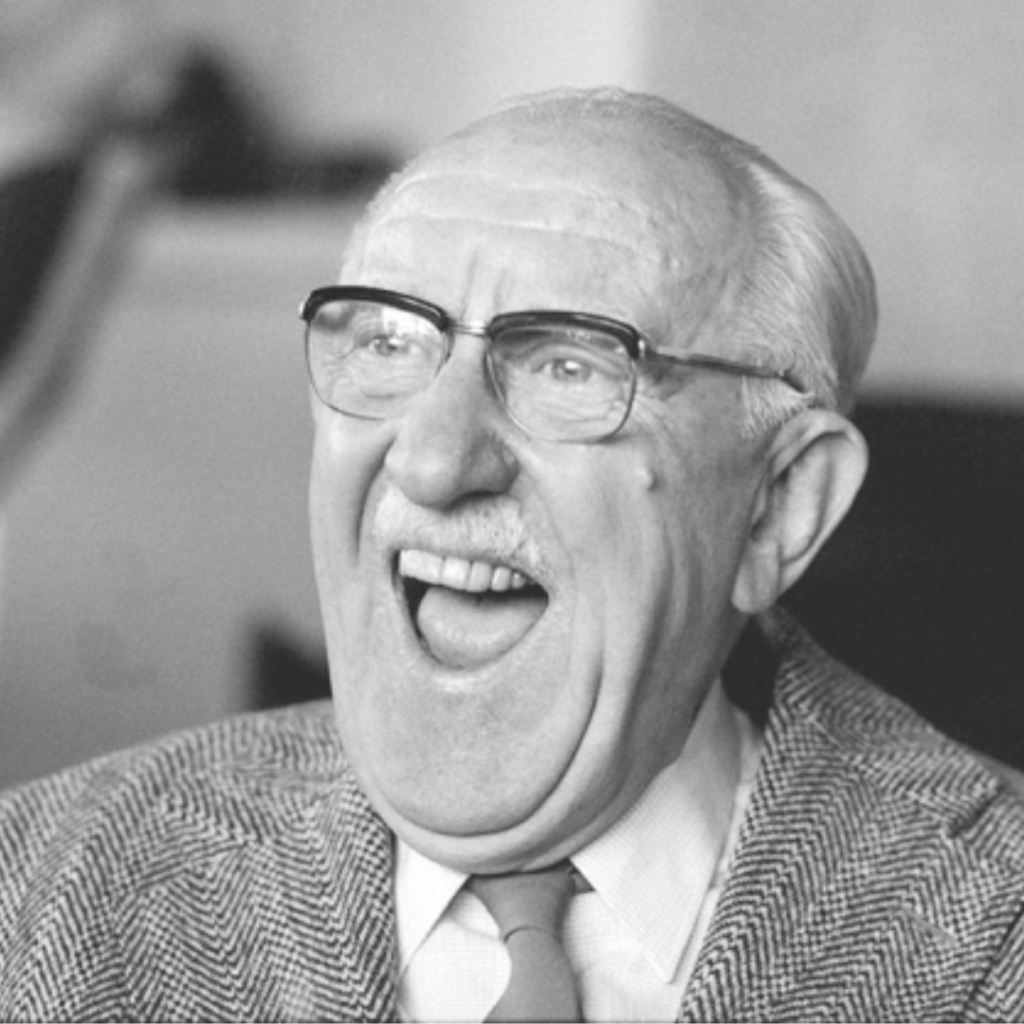
Halldór Kiljan Laxness was an Icelandic writer, poet and a playwright and is the only Icelander ever to get the Nobel prize.
Born in Reykjavík in 1902 as Halldór Guðjónsson, Laxness started writing stories from a very early age. His first novel, Child of Nature (Barn náttúrunnar), was published in 1919 when Halldór was only 17 years old.
He was very well travelled, which was not common for Icelanders in those times. In one of his travels as a young man, he got baptised as a Catholic and adopted the middle name Kiljan and the surname Laxness.
He was influenced by expressionism in Europe and other modern currents and for a while he lived in the USA, trying to make it in Hollywood as a screenwriter. There he became attracted to socialism and got in trouble in the US for being public about that. He returned to Iceland but kept travelling a lot throughout his life.
Socialistic ideology influenced his writing, and many say that it coloured all his work from 1930 to 1950.
Laxness had a unique spelling style, not following strict Icelandic grammar. He wrote closer to pronunciation, which of course is lost when his work is translated.
Halldór Laxness had a long and productive career, often getting criticised for his work or his public opinions. He received multiple prizes for his work throughout the years, but the undisputed highlight of his career was in 1955 when he was granted the Nobel Prize in literature. According to the Nobel committee, the motivation for his reward was “his vivid epic power which has renewed the great narrative art of Iceland”.
Laxness was active into the 1980s, but in 1995 he died at the age of 95, after a battle with Alzheimer’s disease.
It is hard to overstate the legacy of Halldór Kiljan Laxness on Icelandic contemporary culture. He left behind a huge amount of works, including many masterpieces. You might know novels like Independent People, The Great Weaver from Kashmir, World light or The Fish can sing, to name a few.
Bibliography (novels)
- 1919: Barn náttúrunnar (Child of Nature)
- 1924: Undir Helgahnúk (Under the Holy Mountain)
- 1927: Vefarinn mikli frá Kasmír (The Great Weaver from Kashmir)
- 1931: Þú vínviður hreini (O Thou Pure Vine) – Part I of Salka Valka
- 1932: Fuglinn í fjörunni (The Bird on the Beach) – Part II of Salka Valka
- 1933: Úngfrúin góða og Húsið (The Honour of the House), as part of Fótatak manna: sjö þættir
- 1934: Sjálfstætt fólk — Part I, Landnámsmaður Íslands (Icelandic Pioneers), Independent People
- 1935: Sjálfstætt fólk – Part II, Erfiðir tímar (Hard Times), Independent People
- 1937: Ljós heimsins (The Light of the World) – Part I of Heimsljós (World Light)
- 1938: Höll sumarlandsins (The Palace of the Summerland) – Part II of Heimsljós (World Light)
- 1939: Hús skáldsins (The Poet’s House) – Part III of Heimsljós (World Light)
- 1940: Fegurð himinsins (The Beauty of the Skies) – Part IV of Heimsljós (World Light)
- 1943: Íslandsklukkan (Iceland’s Bell) – Part I of Íslandsklukkan (Iceland’s Bell)
- 1944: Hið ljósa man (The Bright Maiden) – Part II of Íslandsklukkan (Iceland’s Bell)
- 1946: Eldur í Kaupinhafn (Fire in Copenhagen) – Part III of Íslandsklukkan (Iceland’s Bell)
- 1948: Atómstöðin (The Atom Station)
- 1952: Gerpla (The Happy Warriors (1958) / Wayward Heroes (2016))
- 1957: Brekkukotsannáll (The Fish Can Sing)
- 1960: Paradísarheimt (Paradise Reclaimed)
- 1968: Kristnihald undir Jökli (Under the Glacier / Christianity at the Glacier)
- 1970: Innansveitarkronika (A Parish Chronicle)
- 1972: Guðsgjafaþula (A Narration of God’s Gifts)
For a complete bibliography see Laxness’ Wikipedia site.
For more info about Laxness’ work and legacy visit his official website
